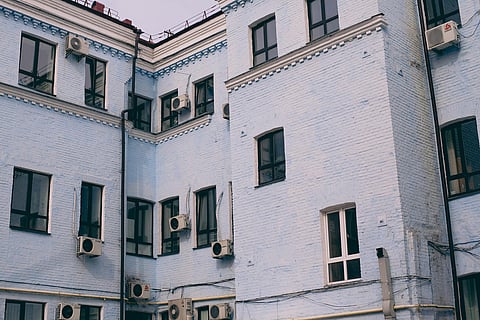Split AC Systems: Benefits and Installation Tips
When it comes to keeping your home cool and comfortable during the hot summer months, a split air conditioning (AC) system can be an ideal solution. With its unique design and multiple benefits, a split AC system offers efficient cooling while minimizing energy consumption. In this article, we will explore the advantages of split AC systems and provide some useful installation tips to help you make an informed decision for your home.
Benefits of Split AC Systems
1. Cost-effective Cooling
Split AC systems are known for their energy efficiency, helping you save on your monthly utility bills. Unlike traditional window units, split AC systems use less power by cooling specific areas rather than trying to cool the entire house. This zoned cooling not only reduces wasted energy but also allows you to customize the temperature in different rooms based on individual preferences, maximizing comfort while saving money. When looking for split AC systems for sale, consider their cost-effectiveness.
2. Improved Indoor Air Quality
One of the notable benefits of split AC systems is their ability to improve indoor air quality. These systems include advanced filtration technology that helps eliminate dust particles, allergens, and other harmful pollutants from the air, providing cleaner and healthier indoor environments. This can be particularly beneficial for individuals with respiratory issues or allergies.
3. Quiet Operation
Unlike window units or portable air conditioners that can be quite noisy when operating at high capacities, split AC systems are designed for quiet operation. With its two separate components - an outdoor condenser unit and an indoor evaporator unit - noise levels are significantly reduced inside your home. The compressor is placed outside, ensuring minimal disturbance from vibrating machinery noise inside.
Installation Tips for Split AC Systems
1. Professional Installation
While it may be tempting to try installing a split AC system yourself to save some money, it is highly recommended that you hire a professional HVAC technician for this task. Proper installation is key to maximizing performance and ensuring the safety and durability of your system in the long run. An experienced installer will handle all the necessary electrical work, refrigerant charging, and proper insulation around the refrigerant lines.
2. Choosing the Right Location
During the installation process, selecting the appropriate location for the indoor unit is crucial. Ideally, it should be installed on a solid wall away from direct sunlight or heat sources. This helps prevent unnecessary heat gain inside your home and ensures efficient cooling performance. Additionally, professional installers consider factors such as airflow and accessibility to ensure optimal functioning of your split AC system.
3. Proper Insulation
To ensure that your split AC system works efficiently, it's essential to insulate the refrigerant lines properly. Insulation prevents temperature loss during transportation of the refrigerant between the indoor and outdoor units. Properly insulated refrigerant lines also help reduce energy consumption and prevent sweating or condensation issues.
4. Regular Maintenance
To keep your split AC system running smoothly and maximize its lifespan, regular maintenance is crucial. This includes cleaning or replacing filters regularly to maintain proper airflow and efficient operation of the system. It is recommended to schedule annual maintenance visits with a qualified HVAC technician who can check for any potential issues and ensure optimal performance.
5. Enhanced Control with Smart Technology
With advancements in technology, many split AC systems now offer smart features that allow you to control and monitor your cooling remotely. Through smartphone apps or voice assistants, you can adjust temperature settings, set schedules, and even receive energy usage reports. This level of flexibility and control adds convenience to your daily life while ensuring efficient cooling when you need it most.
Eco-Friendly Cooling Options
When it comes to sustainability, split AC systems have an edge over traditional air conditioning units. These systems often use eco-friendly refrigerants that have a lower environmental impact than older models. The zoned cooling feature of split AC systems also allows you to cool specific areas as needed, preventing energy waste and reducing your carbon footprint.
Conclusion
Choosing a split AC system for your home can provide numerous benefits: cost-effective cooling, improved indoor air quality, and quiet operation. However, proper installation is vital in optimizing these advantages while ensuring durability and safety over time. By hiring a professional installer who understands the intricacies of split AC systems and following some simple tips like choosing an appropriate location, insulating refrigerant lines adequately, and scheduling regular maintenance visits, you can enjoy reliable cooling comfort throughout summer while enjoying energy savings.
Inspired by what you read?
Get more stories like this—plus exclusive guides and resident recommendations—delivered to your inbox. Subscribe to our exclusive newsletter
Resident may include affiliate links or sponsored content in our features. These partnerships support our publication and allow us to continue sharing stories and recommendations with our readers.

